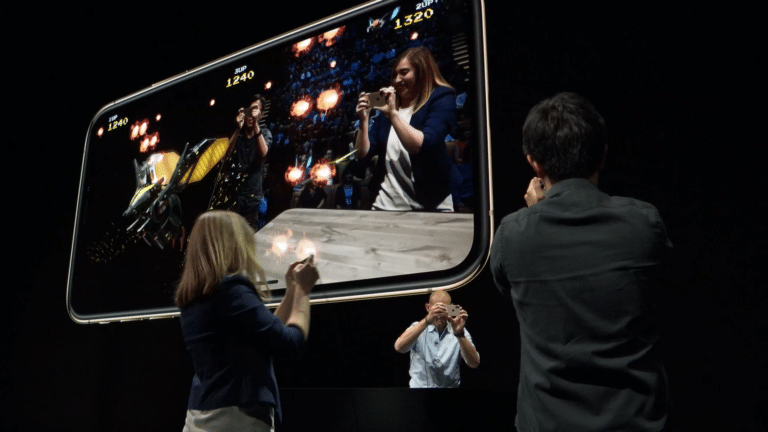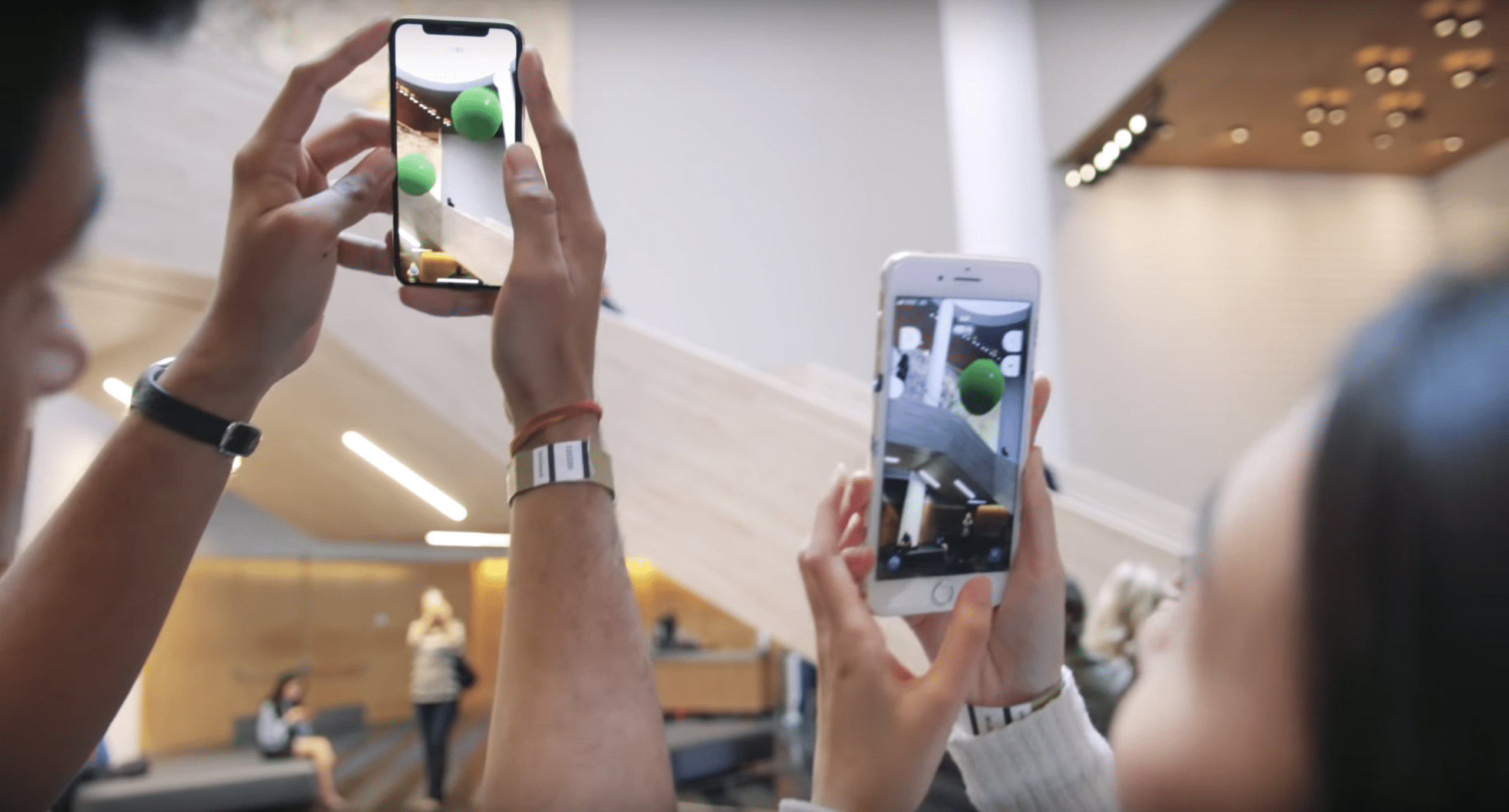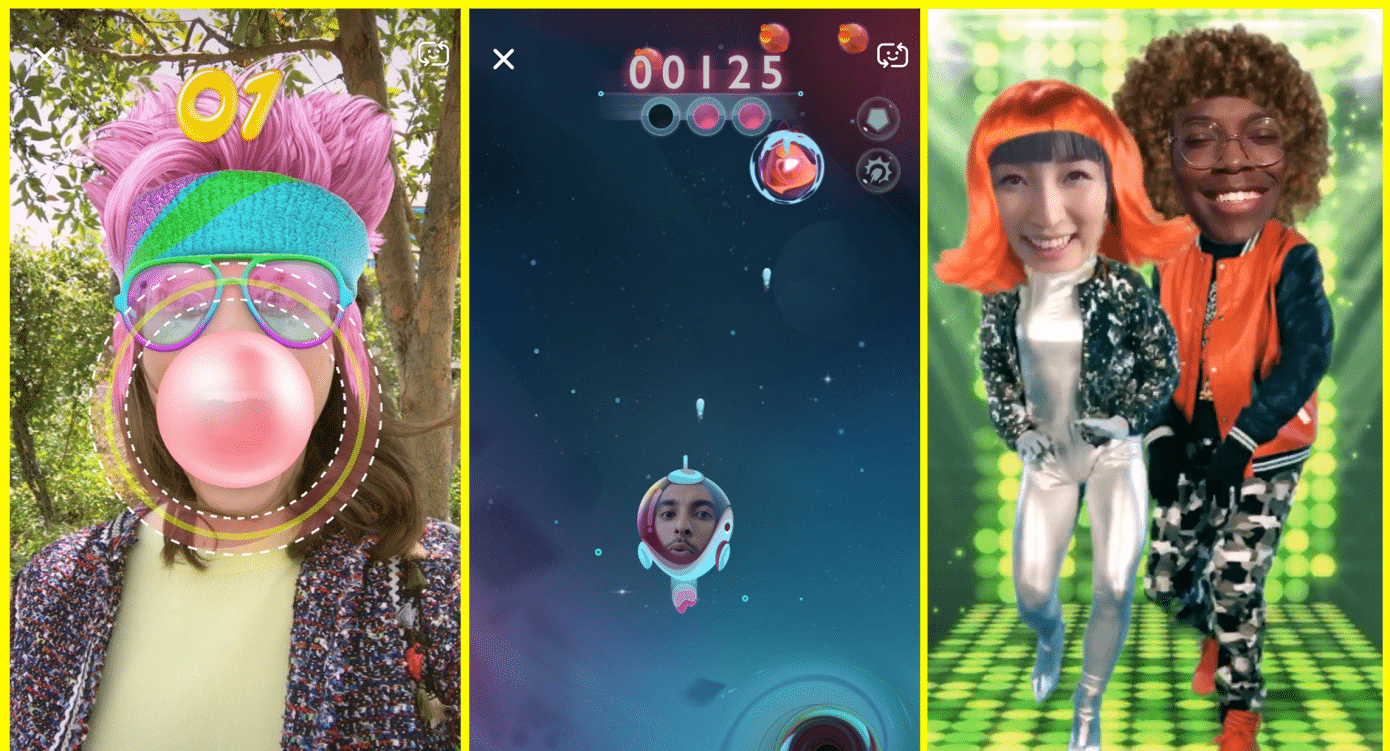
This post is adapted from ARtillery Intelligence’s latest report, Social AR: Spatial Computing’s Network Effect. It includes some of its data and takeaways. More can be previewed here and subscribe for the full report.
When examining social AR’s success, there’s an elephant in the room: Experiences so far aren’t very meaningful. By that we mean the social and immersive elements of AR lenses are fairly rudimentary, including sharing photos of ourselves decorated with dog ears or rainbow vomit.
Returning to the question of if Snapchat and Facebook social lenses are “true AR,” there’s another attribute to examine. We believe they aren’t true AR, but not for the reasons espoused earlier in this report (sophistication and dimensional accuracy). They’re not true AR for another reason.
Social lenses are more like “augmented media.” The moment of augmentation is when something is being recorded such as a selfie mask in a picture or video. It is then shared through a direct message or social feed, then consumed by friends at a different time and place.
This makes social lenses asynchronous. This is not necessarily a bad thing, but it should be acknowledged that greater dimensions of social interaction will be unlocked through social AR experiences that are synchronous. That is, they’re experienced together in the same time & space.

In Sync
We’re getting closer to that vision. Snap’s Snappables synchronizes AR in time but not in space. It infuses real-time augmentation within two-player games, where selfie lenses are applied to players faces. Though they’re in different places, the augmentation happens in real time.
Similarly, Facebook Portal offers AR video-chat. Known as Storytime, remote adults can narrate stories to children while their faces are augmented in the style of the story’s plot and characters. Super Ventures’ Partner Tom Emrich rightly heralds this as the Trojan Horse for AR in the home.
Moving on to the other main variable of synchronous AR, space, things get more complicated. Time is the easy variable to sync. With space, we get into complexities of spatial computing and multi-player functionality. This allows several people to see the same thing from different devices.
Because of the challenges in device syncing, localization and computational load to accurately process spatial geometry, this will take longer to perfect. Google and Apple have begun to tackle this issue in their respective AR developer kits which will accelerate things a bit.

Persistence Pays
Google’s Cloud Anchors are a step towards multi-player AR by letting developers build apps that have synchronous gameplay. They work similar to ARcore and ARkit’s scene mapping in that they establish anchor points for graphics, but now also sync anchor points between multiple devices.
“The way we’d do it in AR today is plant [graphics] as relative offsets from an anchor and that becomes your reference frame,” said Google’s James Birney at Google I/O. “Anchors can’t talk to each other so this is what a cloud anchor solves…We can have a common anchor in the middle.”
Google also has use cases in mind beyond socially-oriented gaming (as “multi-player” would imply). As Amazon and IKEA have already done, AR will be a practical and monetizable tool for in-home product visualization. Multi-player functionality can add new dimension to such scenarios.
“If I’m placing a speaker system here, I can have my wife also look at [it] from her phone,” said Birney. “There’s a certain feeling of consistency and trust if you’re the advertiser or e-commerce site if you have two users looking at it, and it shows up consistently for both of them.”

Open Season
Apple is doing something similar with multiplayer support in ARkit. It demonstrated the capability at June’s WWDC in which a 3D reboot of the classic arcade game Galaga allowed several players to shoot enemies that fly in front of them – positionally tracked and synchronous for all.
This utilizes ARKit 2.0’s multiplayer support to power synchronous play, as well as the four-core GPU of the latest batch of iPhones. The latter renders higher-quality graphics which adds to the AR immersion of the game, along with the stereo sound of the iPhone Xs and Xs Max.
The functionality this unlocks could represent compelling use cases when put into the hands of developers. It’s still open season for the first AR killer app, and the stakes are high given mobile AR’s potential market size. We believe it could involve synchronous social experiences.
“This delivers true, multi-user augmented reality,” said Apple’s Craig Federighi at WWDC. “You and people around you will be able to see your own perspective on a common virtual environment.” Beyond tech giants, more focused underlying tech is being built by smaller players like 6d.ai.

Not So Fast…
Here we must stop to point out that multiplayer AR isn’t a silver bullet. The requirement for another player in close proximity could be limiting, compared to place-shifted play. The best example of the latter is an older game like Words with Friends, which thrives on the ability to unite remote players.
“[With] mobile AR, you’re probably somewhere random in the house, at the office or on the move,” said Tony Parisi at last June’s AWE event. “Requiring someone to be in a specific place is damn inconvenient — unless the whole point is to get you there, such as Niantic’s location-based titles.”
So greater operability could come from a combination of synchronicity and accommodating faraway players. This could maximize the serendipity and appeal of synchronous multi-player AR, while not inhibiting scale and network effect by imposing physical requirements of time and space.
So it’s on developers to tap into multi-player advantages while avoiding scale-reducing tendencies. For example, is there potential for synchronous, on-site interaction plus place-shifted play or spectators (think: e-sports) to tap into the best of both worlds? This could be the magic combo.
See more details about this report or continue reading here.
For deeper XR data and intelligence, join ARtillery PRO and subscribe to the free AR Insider Weekly newsletter.
Disclosure: AR Insider has no financial stake in the companies mentioned in this post, nor received payment for its production. Disclosure and ethics policy can be seen here.
Header image credit: Apple
